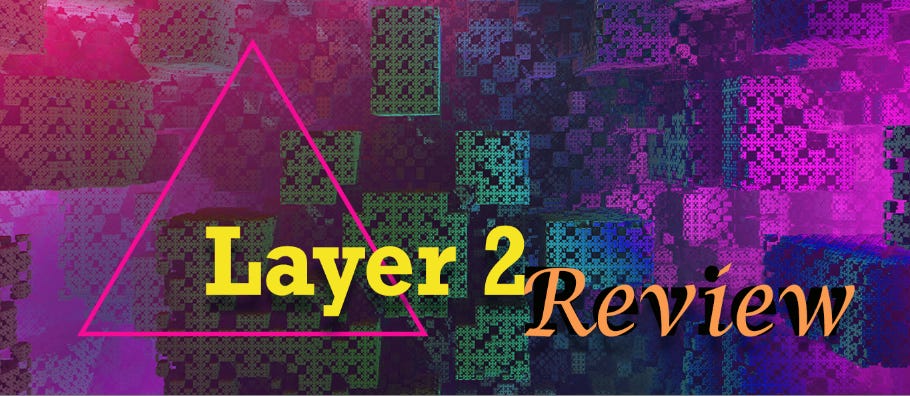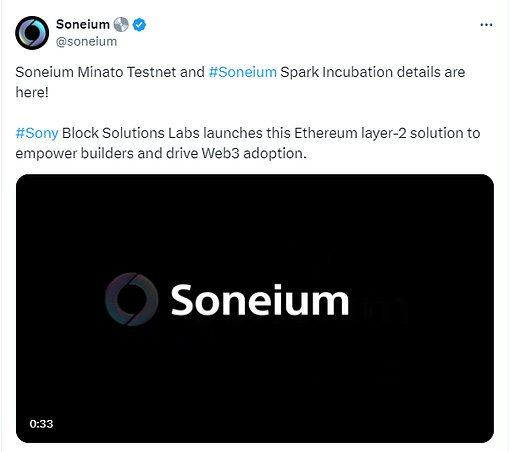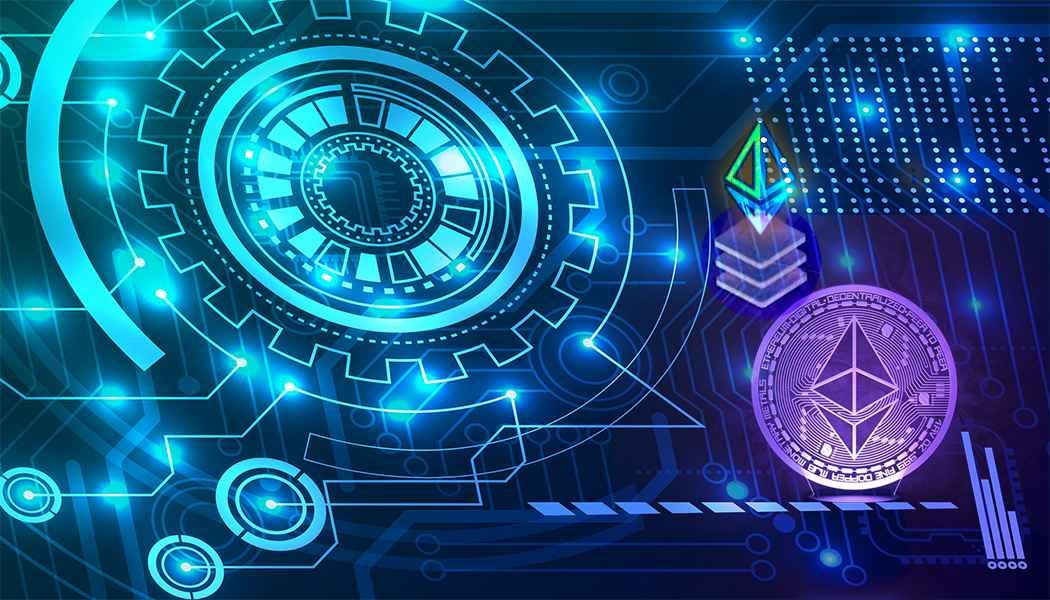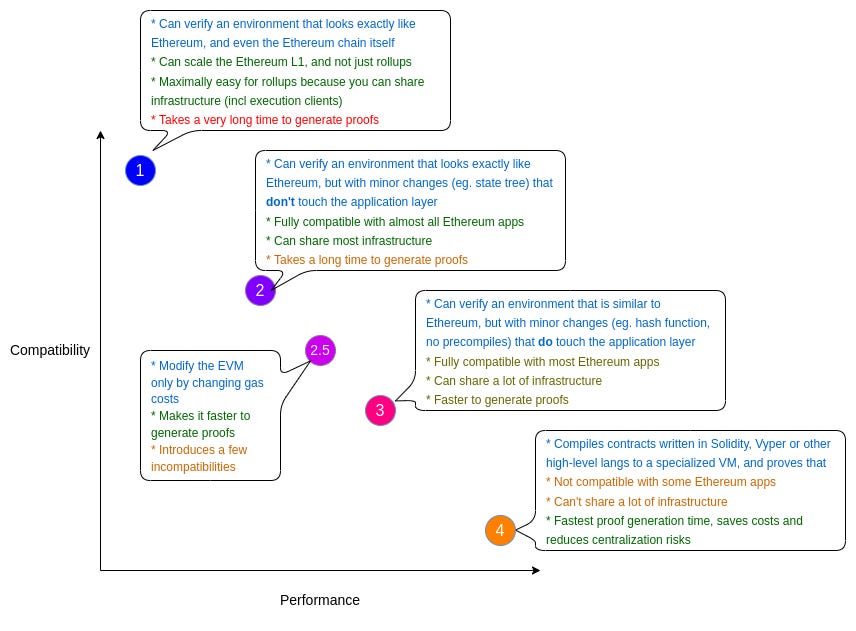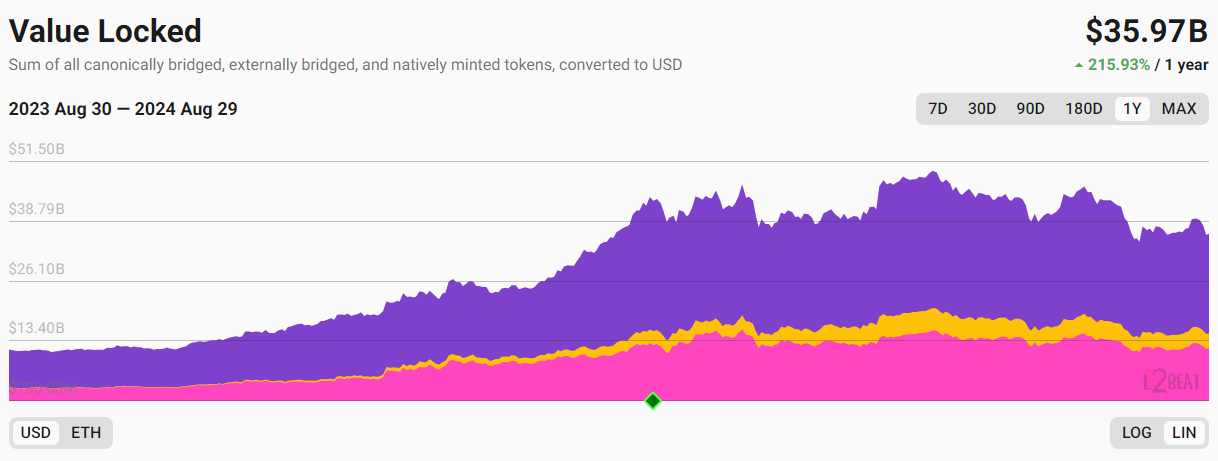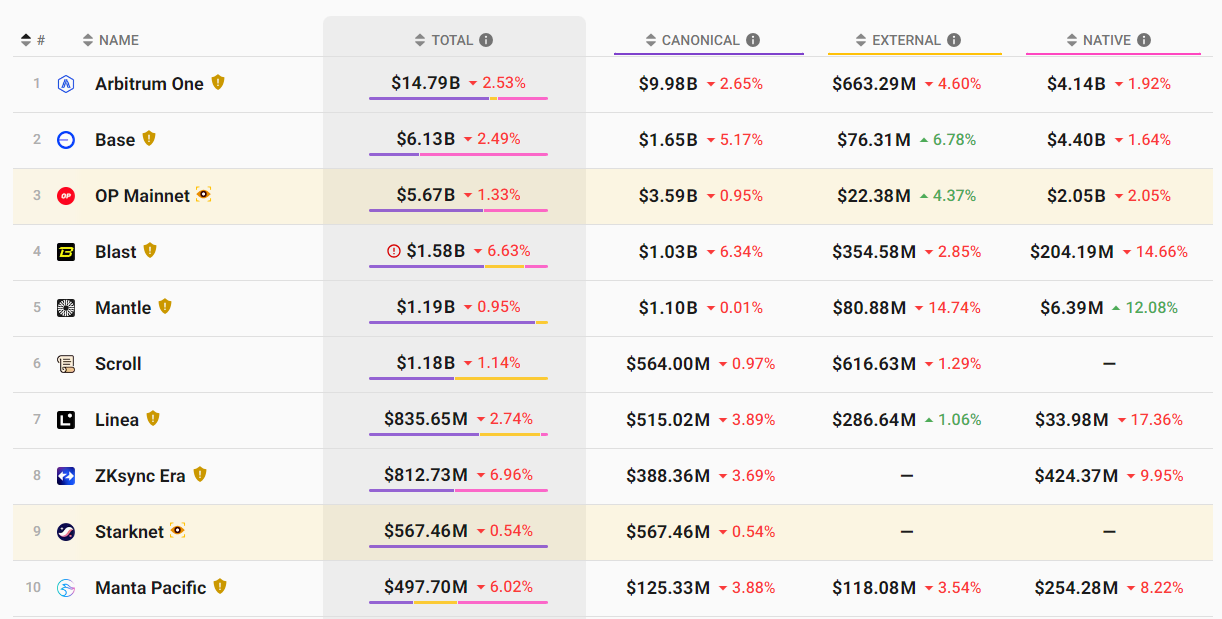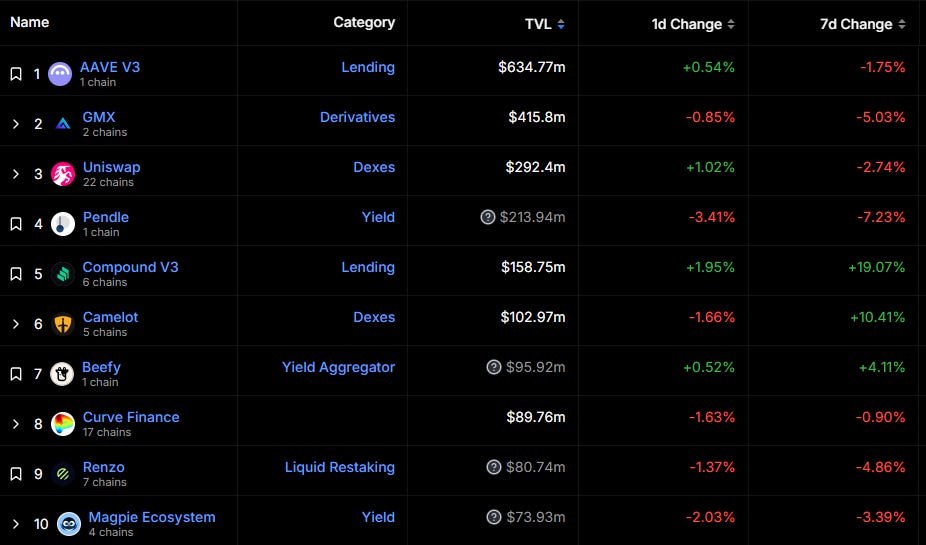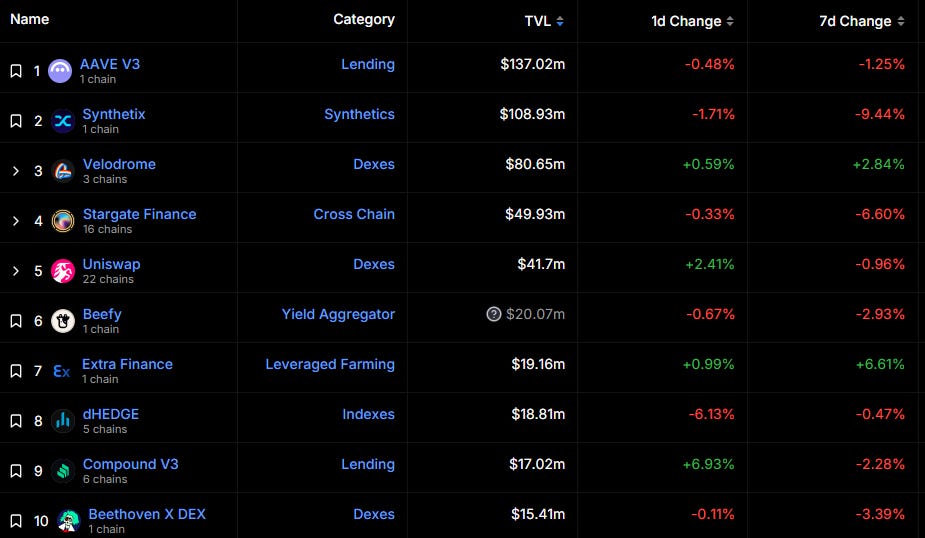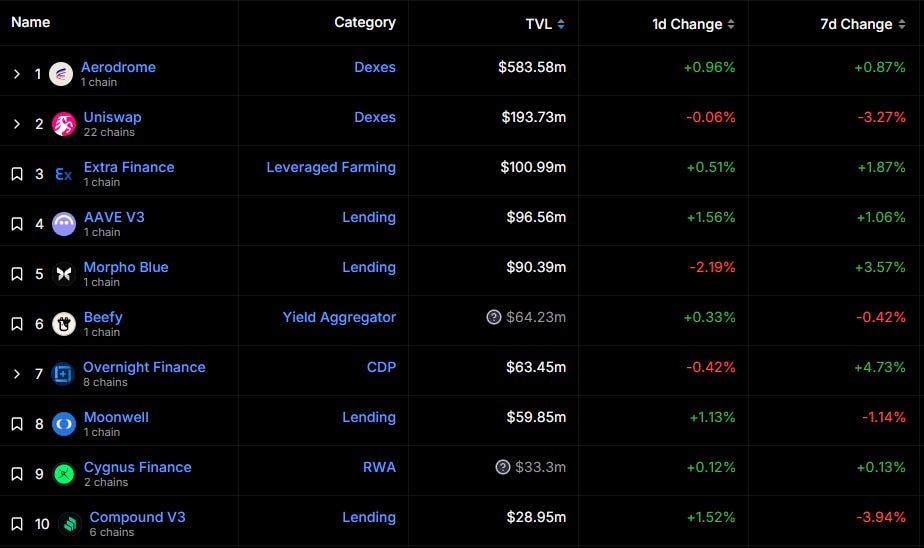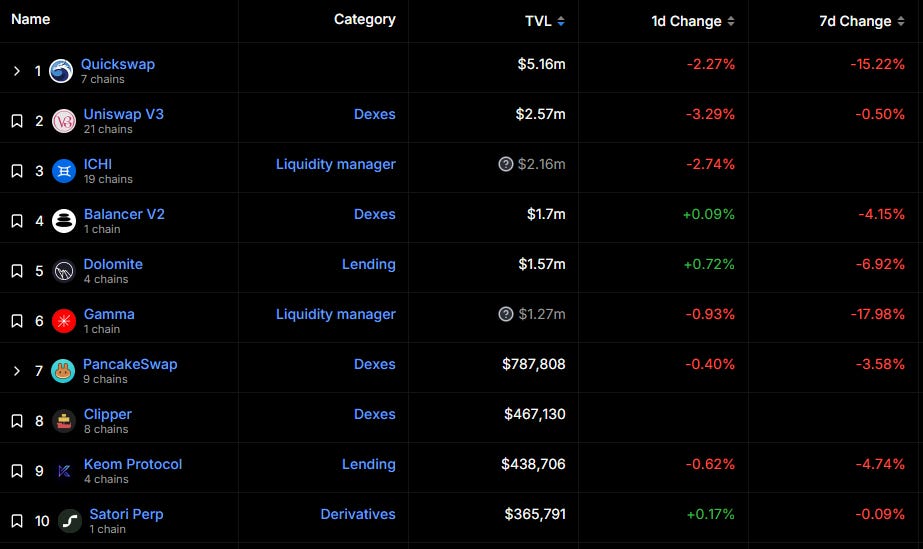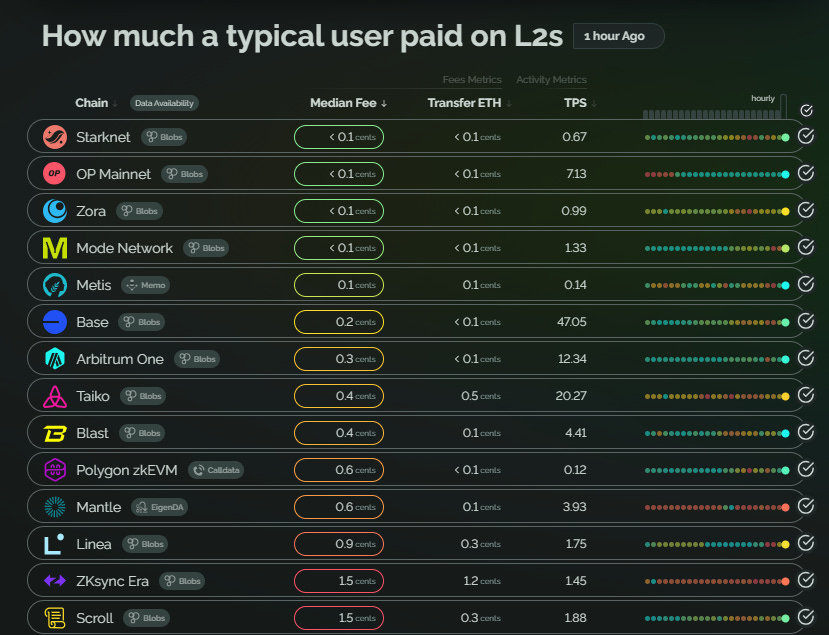Bankless DAO - The World of zkEVMs | Layer 2 Review
The World of zkEVMs | Layer 2 ReviewQuick Reads and Hot Links Covering the People and Projects Who Are Scaling EthereumDear Frens, The momentum in the Layer 2 ecosystem shows no signs of slowing down, with several exciting developments making headlines. Among the most intriguing is Pepe Unchained (PEPU), a new L2 on Ethereum purpose-built for meme coins. The project recently hit $11 million in its presale, signaling robust enthusiasm within the meme community. Meanwhile, Arbitrum is preparing to launch Stylus, a groundbreaking development set to go live on September 3, 2024, coinciding with the platform’s anniversary. Stylus allows developers to buidl on Arbitrum using more developer-native languages like Rust, C, and C++. This, combined with faster computational efficiency and more efficient memory usage, positions Arbitrum for a major developer influx. Optimism has also made headlines with the introduction of Soneium to its Superchain. Sony Block Solutions Labs officially introduced Soneium, an Ethereum Layer 2 developed on the OP Stack to bridge the gap between web3 and traditional internet services, making blockchain technology more scalable and user-friendly for the average consumer. These developments are just the tip of the iceberg of advancements unfolding across the Layer 2 ecosystem. Explore the world of zkEVMs as this issue’s editorial takes us on a tour of the tech powering general-purpose zk-rollups. Scroll on as we bring you the latest insights and updates from the top Layer 2 projects reshaping the future of blockchain. Contributors: Lucent, Melasin, Tonytad, Boluwatife, Kornekt, WinVerse This is an official newsletter of BanklessDAO. Please subscribe and share to help us grow our audience as we fulfill our mission to build user-friendly crypto onramps. 🗞️ Ecosystem Updates⛓️ How (and why) the Superchain drives fees to the Optimism Collective 🆕 Bridged USDC Standard has arrived on the OP Stack! 🔀 Applications for Retro Funding 5 is now open ➿ Track the latest Superchain contributions via the Superchain Health Dashboard. 🔥 Hot NewsSony's Soneium is Bridging the Entertainment and Blockchain Industry with its Innovative Layer 2 SolutionSony Group's blockchain subsidiary has taken a significant step into the web3 space with the launch of the "Minato" testnet for Soneium, their Ethereum Layer 2 blockchain. This move shows Sony's strategic push to leverage its entertainment and gaming expertise on the blockchain, aiming to create practical applications that enhance user experiences. Soneium is designed to bring blockchain technology to the forefront of gaming and entertainment, to improve how in-game assets are managed through NFTs, and to explore new financial models within the industry. The launch of Soneium comes at a time when blockchain technology is gaining traction across various sectors. Sony's entry could accelerate the adoption and development of user-friendly, scalable blockchain solutions. This initiative demonstrates how traditional entertainment giants can adapt to developing technologies to create new value for their audiences. For developers, Soneium offers an exciting opportunity. The "Soneium Spark" incubation program, running alongside the Minato testnet, provides a comprehensive support system. This includes technical workshops, mentorship from industry leaders, and access to Soneium's advanced features. Most notably, qualified projects can receive up to $100,000 in funding, with the potential for further investment through Sony's partner network. For more details on Soneium and how to get involved, be sure to check out the tweet below.👇🏾 🏛 Governance💬 Proposals in DiscussionArbitrumOptimismPolygonStarknetThe World of zkEVMsAuthor: Kornekt In a previous article, I did an intro into zero-knowledge (zk) proving and how scaling solutions are applying the technology to enhance Ethereum’s scalability. While zk technology is very efficient, its inherent complexity introduces challenges that limit its general-purpose application. If all we wanted to use zk-rollups for was specialized functions like facilitating token payments and exchanges, then it would have been perfect. However, issues arise in an attempt to extend its functionality for generalized smart contract operations while still keeping it compatible with the Ethereum Virtual Machine (EVM). Unlike their Optimistic counterparts, zk computations in their basic form are not inherently compatible with the EVM — the environment in which Ethereum smart contracts run. The EVM wasn't designed with them in mind. As such, there is a need to create an environment suitable for zero-knowledge computations and still compatible with the EVM. This is so that zk-rollups can offer the same smart contract functionality as Ethereum. This is where zkEVMs come into play. Bridging the Gap With zkEVMsA zkEVM, or Zero-Knowledge Ethereum Virtual Machine, is an extension of zk-rollups that aims to make them fully compatible with the EVM. This means that zkEVMs can execute Ethereum smart contracts off-chain and generate zero-knowledge proofs that these executions were performed correctly. These proofs can then be submitted to the Ethereum mainnet for verification, just like conventional zk transaction proving. The challenge in creating zkEVMs lies in replicating the behavior of the EVM in a zero-knowledge-proof-friendly environment. The EVM is complex, supporting a wide range of operations, including arithmetic, storage access, conditional branching, and lots more. Generating a zero-knowledge proof for an arbitrary EVM computation requires encoding these operations in a way suitable for zero-knowledge proof generation and verification. Working Principle of zkEVMsTo achieve the goal, zkEVMs feature an execution layer for smart contracts, similar to the EVM, and a proving circuit for generating zk proofs to validate state changes arising from the execution layer. The proofs are then submitted to a verifier contract on Ethereum responsible for validating the state changes on mainnet. By doing so, zkEVMs enable developers to deploy and run their Ethereum smart contracts without modification while benefiting from the scalability and cost-efficiency of zk technology. As simple as this sounds, it is very computationally intensive and requires a good knowledge of cryptography and the EVM itself. Perfectly modeling the EVM in a zk environment can be daunting. As a result, developers of zkEVMs make certain tradeoffs to balance the need for EVM compatibility with the performance of the system. These tradeoffs have led to several distinctions in how zkEVM developers approach their building. Vitalik Buterin created a "taxonomy” of the different types of zkEVMs, distributing them into four major types according to the tradeoffs between EVM compatibility and performance.
Classification of zkEVMsType 1: Fully Ethereum EquivalentThese zkEVMs aim to match Ethereum exactly as it is, without making any changes to the consensus layer. This means they don't alter any core aspects of how Ethereum works in their zkEVM. Because they stick so closely to the original design, these zkEVMs ensure the highest level of compatibility with Ethereum. However, this also means that generating proofs takes longer and can be more expensive. Type 2: Fully EVM (Not Ethereum) EquivalentThis type of zkEVM closely mimics the Ethereum Virtual Machine (EVM) but modifies some parts of the Ethereum stack to make zk proving faster. These changes make proof generation faster while still maintaining compatibility with existing Ethereum applications. However, they are not an exact match of Ethereum’s structure like type 1 zkEVMs. Type 3: Almost EVM EquivalentThese zkEVMs are designed to be very similar to the EVM but are optimized for zero-knowledge-proof efficiency. They simplify or remove certain features of the EVM to make the proof generation process faster and more efficient. As a result, developers might need to modify their smart contracts to run on these zkEVMs. While these types exist now, the goal for many is to eventually evolve into a type that closely matches the EVM without needing such trade-offs. Type 4: High-Level Language Equivalent to EVMThese zkEVMs take a different approach by translating smart contract code (usually written in Solidity) into a custom-designed language that is optimized for zero-knowledge-proof systems. This approach significantly speeds up the proof generation process but does not directly execute the original EVM bytecode. Instead, it converts the code into a more proof-friendly format. Current Implementations of zkEVMs in Layer 2 RollupsSeveral projects are actively developing and implementing zkEVMs to bring scalable and privacy-preserving smart contract functionality to Ethereum layer 2. Notable among them are ZKsync, Polygon zkEVM, Scroll, Linea, and Starknet. These projects take different approaches to build their zkEVM based on ease of application and user-friendliness. However, the goal for many is to ultimately be a type 1 or type 2 zkEVM offering complete equivalence with Ethereum or the EVM.
The complexity of zkEVMs has made the development of general-purpose zk-rollups slower than their Optimistic counterparts. For instance, no zkEVM rollup has attained stage 1 decentralization. But like Vitalik stated in his rollup primer: “In general, my own view is that in the short term, Optimistic rollups are likely to win out for general-purpose EVM computation and ZK rollups are likely to win out for simple payments, exchange and other application-specific use cases, but in the medium to long term ZK rollups will win out in all use cases…” The Zero-knowledge FuturezkEVMs represent a significant advancement in Ethereum scaling, offering a promising solution to the challenges of scalability, privacy, and cost-efficiency. One major talking point with the tech is composability and interoperability between different zkEVMs. There is also the issue of decentralization and security due to the centralization of processing on single sequencers. Despite the current challenges, with several projects actively developing and implementing zkEVMs, the technology will only get better making the future of Ethereum increasingly scalable and user-friendly. 📈 DataTotal Value Locked on L2s is About $36 billion!
Top Ten Projects by Total Value Locked:
🔭 Project WatchArbitrumTop Projects by TVL in the Last 7 Days
OptimismTop Projects by TVL in the Last 7 Days
BaseTop Projects by TVL in the Last 7 Days
Polygon zkEVMTop Projects by TVL in the Last 7 Days
🔥 L2 Fees UpdateTransaction Fees as of August 29, 2024:
|
Older messages
The Importance of Being in Value-aligned Communities | BanklessDAO Weekly Rollup
Saturday, August 24, 2024
Catch up With What Happened This Week in BanklessDAO ͏ ͏ ͏ ͏ ͏ ͏ ͏ ͏ ͏ ͏ ͏ ͏ ͏ ͏ ͏ ͏ ͏ ͏ ͏ ͏ ͏ ͏ ͏ ͏ ͏ ͏ ͏ ͏ ͏ ͏ ͏ ͏ ͏ ͏ ͏ ͏ ͏ ͏ ͏ ͏ ͏ ͏ ͏ ͏ ͏ ͏ ͏ ͏ ͏ ͏ ͏ ͏ ͏ ͏ ͏ ͏ ͏ ͏ ͏ ͏ ͏ ͏ ͏ ͏ ͏ ͏ ͏ ͏ ͏ ͏ ͏ ͏ ͏ ͏
Rolling Up the Decentralization Stages | Layer 2 Review
Tuesday, August 20, 2024
Quick Reads and Hot Links Covering the People and Projects Who Are Scaling Ethereum ͏ ͏ ͏ ͏ ͏ ͏ ͏ ͏ ͏ ͏ ͏ ͏ ͏ ͏ ͏ ͏ ͏ ͏ ͏ ͏ ͏ ͏ ͏ ͏ ͏ ͏ ͏ ͏ ͏ ͏ ͏ ͏ ͏ ͏ ͏ ͏ ͏ ͏ ͏ ͏ ͏ ͏ ͏ ͏ ͏ ͏ ͏ ͏ ͏ ͏ ͏ ͏ ͏ ͏ ͏ ͏ ͏ ͏ ͏
The Identity of Our Future | BanklessDAO Weekly Rollup
Tuesday, August 20, 2024
Catch Up With What Happened This Week in BanklessDAO ͏ ͏ ͏ ͏ ͏ ͏ ͏ ͏ ͏ ͏ ͏ ͏ ͏ ͏ ͏ ͏ ͏ ͏ ͏ ͏ ͏ ͏ ͏ ͏ ͏ ͏ ͏ ͏ ͏ ͏ ͏ ͏ ͏ ͏ ͏ ͏ ͏ ͏ ͏ ͏ ͏ ͏ ͏ ͏ ͏ ͏ ͏ ͏ ͏ ͏ ͏ ͏ ͏ ͏ ͏ ͏ ͏ ͏ ͏ ͏ ͏ ͏ ͏ ͏ ͏ ͏ ͏ ͏ ͏ ͏ ͏ ͏ ͏ ͏
Building Financial Trust for the Future | BanklessDAO Weekly Rollup
Sunday, August 11, 2024
Catch Up With What Happened This Week in BanklessDAO ͏ ͏ ͏ ͏ ͏ ͏ ͏ ͏ ͏ ͏ ͏ ͏ ͏ ͏ ͏ ͏ ͏ ͏ ͏ ͏ ͏ ͏ ͏ ͏ ͏ ͏ ͏ ͏ ͏ ͏ ͏ ͏ ͏ ͏ ͏ ͏ ͏ ͏ ͏ ͏ ͏ ͏ ͏ ͏ ͏ ͏ ͏ ͏ ͏ ͏ ͏ ͏ ͏ ͏ ͏ ͏ ͏ ͏ ͏ ͏ ͏ ͏ ͏ ͏ ͏ ͏ ͏ ͏ ͏ ͏ ͏ ͏ ͏ ͏
DAO Structure | BanklessDAO Weekly Rollup
Saturday, August 3, 2024
Catch Up With What Happened This Week in BanklessDAO ͏ ͏ ͏ ͏ ͏ ͏ ͏ ͏ ͏ ͏ ͏ ͏ ͏ ͏ ͏ ͏ ͏ ͏ ͏ ͏ ͏ ͏ ͏ ͏ ͏ ͏ ͏ ͏ ͏ ͏ ͏ ͏ ͏ ͏ ͏ ͏ ͏ ͏ ͏ ͏ ͏ ͏ ͏ ͏ ͏ ͏ ͏ ͏ ͏ ͏ ͏ ͏ ͏ ͏ ͏ ͏ ͏ ͏ ͏ ͏ ͏ ͏ ͏ ͏ ͏ ͏ ͏ ͏ ͏ ͏ ͏ ͏ ͏ ͏
You Might Also Like
Central African Republic’s CAR memecoin raises scrutiny
Friday, February 14, 2025
Allegations of deepfake videos and opaque token distribution cast doubts on CAR's ambitious memecoin project. ͏ ͏ ͏ ͏ ͏ ͏ ͏ ͏ ͏ ͏ ͏ ͏ ͏ ͏ ͏ ͏ ͏ ͏ ͏ ͏ ͏ ͏ ͏ ͏ ͏ ͏ ͏ ͏ ͏ ͏ ͏ ͏ ͏ ͏ ͏ ͏ ͏ ͏ ͏ ͏ ͏ ͏ ͏ ͏
January CEX Data Report: Significant Declines in Trading Volume Across Major CEXs, Spot Down 25%, Derivatives Down…
Friday, February 14, 2025
According to data collected by the WuBlockchain team, spot trading volume on major central exchanges in January 2025 decreased by 25% compared to December 2024. ͏ ͏ ͏ ͏ ͏ ͏ ͏ ͏ ͏ ͏ ͏ ͏ ͏ ͏ ͏ ͏ ͏ ͏ ͏ ͏
Previewing Coinbase Q4 2024 Earnings
Friday, February 14, 2025
Estimating Coinbase's Transaction and Subscriptions & Services Revenue in Q4 2024 ͏ ͏ ͏ ͏ ͏ ͏ ͏ ͏ ͏ ͏ ͏ ͏ ͏ ͏ ͏ ͏ ͏ ͏ ͏ ͏ ͏ ͏ ͏ ͏ ͏ ͏ ͏ ͏ ͏ ͏ ͏ ͏ ͏ ͏ ͏ ͏ ͏ ͏ ͏ ͏ ͏ ͏ ͏ ͏ ͏ ͏ ͏ ͏ ͏ ͏ ͏ ͏ ͏ ͏ ͏ ͏
ADA outperforms Bitcoin as Grayscale seeks approval for first US Cardano ETF in SEC filing
Friday, February 14, 2025
Grayscale's Cardano ETF filing could reshape ADA's market position amid regulatory uncertainty ͏ ͏ ͏ ͏ ͏ ͏ ͏ ͏ ͏ ͏ ͏ ͏ ͏ ͏ ͏ ͏ ͏ ͏ ͏ ͏ ͏ ͏ ͏ ͏ ͏ ͏ ͏ ͏ ͏ ͏ ͏ ͏ ͏ ͏ ͏ ͏ ͏ ͏ ͏ ͏ ͏ ͏ ͏ ͏ ͏ ͏ ͏ ͏ ͏
AI project trading tips: investment targets and position management
Friday, February 14, 2025
This interview delves into the investment trends, market landscape, and future opportunities within AI Agent projects. ͏ ͏ ͏ ͏ ͏ ͏ ͏ ͏ ͏ ͏ ͏ ͏ ͏ ͏ ͏ ͏ ͏ ͏ ͏ ͏ ͏ ͏ ͏ ͏ ͏ ͏ ͏ ͏ ͏ ͏ ͏ ͏ ͏ ͏ ͏ ͏ ͏ ͏ ͏ ͏ ͏
DeFi & L1L2 Weekly — 📈 Polymarket recorded a new high of 462.6k active users in Jan despite volume dip; Holesky a…
Friday, February 14, 2025
Polymarket recorded a new high of 462600 active users in January despite volume dip; Holesky and Sepolia testnets are scheduled to fork in Feb and Mar for Ethereum's Pectra upgrade. ͏ ͏ ͏ ͏ ͏ ͏ ͏ ͏
DeFi & L1L2 Weekly — 📈 Polymarket recorded a new high of 462.6k active users in Jan despite volume dip; Holesky a…
Friday, February 14, 2025
Polymarket recorded a new high of 462600 active users in January despite volume dip; Holesky and Sepolia testnets are scheduled to fork in Feb and Mar for Ethereum's Pectra upgrade. ͏ ͏ ͏ ͏ ͏ ͏ ͏ ͏
Donald Trump taps crypto advocate a16z’s Brian Quintenz for CFTC leadership
Friday, February 14, 2025
Industry leaders back Brian Quintenz's nomination, highlighting his past efforts at the CFTC and potential to revamp crypto oversight. ͏ ͏ ͏ ͏ ͏ ͏ ͏ ͏ ͏ ͏ ͏ ͏ ͏ ͏ ͏ ͏ ͏ ͏ ͏ ͏ ͏ ͏ ͏ ͏ ͏ ͏ ͏ ͏ ͏ ͏ ͏
⚡10 Tips to Make a Living Selling Info Products
Friday, February 14, 2025
PLUS: the best links, events, and jokes of the week → ͏ ͏ ͏ ͏ ͏ ͏ ͏ ͏ ͏ ͏ ͏ ͏ ͏ ͏ ͏ ͏ ͏ ͏ ͏ ͏ ͏ ͏ ͏ ͏ ͏ ͏ ͏ ͏ ͏ ͏ ͏ ͏ ͏ ͏ ͏ ͏ ͏ ͏ ͏ ͏ ͏ ͏ ͏ ͏ ͏ ͏ ͏ ͏ ͏ ͏ ͏ ͏ ͏ ͏ ͏ ͏ ͏ ͏ ͏ ͏ ͏ ͏ ͏ ͏ ͏ ͏ ͏ ͏ ͏ ͏ ͏ ͏ ͏ ͏
Interview with CryptoD: How He Made $17 Million Profit on TRUMP Coin
Friday, February 14, 2025
Author | WUblockchain, Foresight News ͏ ͏ ͏ ͏ ͏ ͏ ͏ ͏ ͏ ͏ ͏ ͏ ͏ ͏ ͏ ͏ ͏ ͏ ͏ ͏ ͏ ͏ ͏ ͏ ͏ ͏ ͏ ͏ ͏ ͏ ͏ ͏ ͏ ͏ ͏ ͏ ͏ ͏ ͏ ͏ ͏ ͏ ͏ ͏ ͏ ͏ ͏ ͏ ͏ ͏ ͏ ͏ ͏ ͏ ͏ ͏ ͏ ͏ ͏ ͏ ͏ ͏ ͏ ͏ ͏ ͏ ͏ ͏ ͏ ͏ ͏ ͏ ͏ ͏ ͏ ͏ ͏ ͏ ͏ ͏ ͏ ͏
